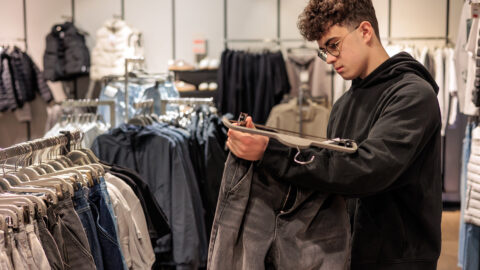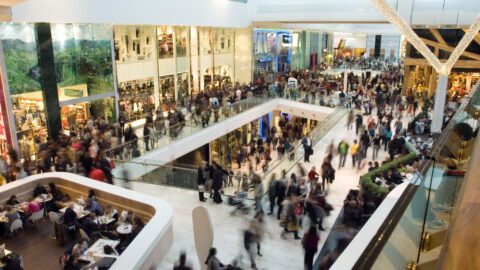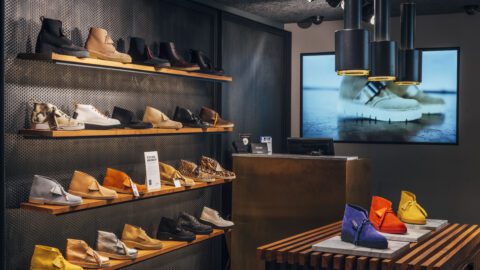Thanksgiving, Black Friday, Small-Business Saturday and Cyber Monday were powerhouse days for retail this year, racking up online sales of more than $20.8 billion, according to Adobe Analytics. Individual days’ e-Commerce sales and growth rates were:
- Thanksgiving: $3.7 billion in revenue, up 27.9%;
- Black Friday: $6.2 billion in revenue, up 23.6%;
- Small-Business Saturday: $3 billion in revenue, up 25.5%; and
- Cyber Monday: $7.9 billion in revenue, up 19.9%.
As expected, mobile set a strong growth pace: 34.3% of online Black Friday sales were made on smartphones, compared to 29.1% on Black Friday in 2017, and 49% of all e-Commerce traffic came from smartphones. Additionally, mobile devices accounted for 54% of e-Commerce sales on Thanksgiving, surpassing desktop computers for the first time, according to Salesforce. Other highlights include:
- Average order value set a new record for Black Friday ($146), up 8.5% from 2017, according to Adobe;
- Target saw Thanksgiving and Black Friday e-Commerce sales rise 48% from 2017, while Sears’ sales fell 47%, according to Edison Trends; and
- Brick-and-mortar wasn’t slacking: 151 million people visited a mall or shopping center over the weekend, up from 145 million in 2017, according to the International Council of Shopping Centers (ICSC). And even though e-Commerce is making the headlines, omnichannel retailers captured 88% of Thanksgiving and Black Friday sales.
While malls and shopping centers registered traffic growth, overall brick-and-mortar traffic was down 1.7% on Thanksgiving Day and Black Friday compared to 2017, according to ShopperTrak. However, this variance is still in line with results from the past several years, and ShopperTrak projects that Black Friday will remain the top brick-and-mortar shopping day in 2018. While Adobe expects more than one dollar in six to be spent online, physical stores will still account for the lion’s share of sales.
Mobile Shines On Thanksgiving Day
Turkey may have left many consumers too full to go out shopping, but they were happy to take advantage of sales from the comfort of their homes: revenue was up 18% on Thanksgiving Day compared to last year, according to Salesforce. Mobile phones in particular helped people shop while still sharing the company of their families (or gave them a heads-down excuse to avoid awkward conversations).
“Mobile is key,” said Rob Garf, VP of Industry Strategy and Insights at Salesforce in an interview with Retail TouchPoints. “Our data shows that mobile usage peaked to 70% of digital traffic over the holiday weekend and reached 68% on Thanksgiving Day, a critical shopping day. Consumers are increasingly using their phones to browse and buy, so retailers need to ensure they are providing consumers with the best mobile user experience to stay on top.”
The most important tool for capturing this traffic is a strong mobile app, and retailers used the Thanksgiving weekend excitement to bring in many new users. Retail apps received 1.8 million net new downloads on Thanksgiving and 2 million on Black Friday, according to Lexi Sydow, Market Insights Manager at to App Annie, a global provider of mobile data and insights. These numbers reflect entirely new users, not shoppers who had previously deleted the app or downloaded an update.
Retailers seeking to make the most of e-Commerce sales throughout the rest of the holiday season will need to offer convenient, shopper-friendly experiences on mobile devices, according to Sydow. They will need to keep in mind mobile devices’ smaller screens and the need for frictionless search and checkout, and they also should look beyond their own industry for inspiration.
“There are definite user experience and interface expectations that consumers have outside of shopping,” said Sydow. “Look at Instagram, Pinterest or Twitter — apps that have a simple, streamlined experience. That’s what people are comparing shopping apps to.”
Connected Shoppers Seek Omnichannel Convenience
Mobile and other online offerings work best when paired with brick-and-mortar options, and omnichannel retailers captured 88% of spending on Thanksgiving Day and Black Friday, according to the ICSC. Among shoppers that utilized click-and-collect services (27% of the total on Thanksgiving Day and Black Friday), 64% made an additional in-store purchase.
“Retailers can make the most of the halo effect by investing in physical stores — and by ensuring that those stores create a memorable and positive experience for customers,” said Stephanie Cegielski, spokesperson for the ICSC. “Our research found that opening a store increases web traffic and brand awareness in that market; that means that retailers pursuing a true omnichannel strategy and investing in brick-and-mortar benefit across the board. When retailers listen to customers and emphasize experience-driven retail, their brands succeed.”
Omnichannel also can drive the in-store experience through mobile apps. Target offered shoppers maps of their local store in its app, with green dots marking where special Black Friday sales would be held as a way to help them plan their shopping trip. The retailer combined these features with skip-the-line and in-store ordering options to make the brick-and-mortar experience as frictionless as possible.
Shoppers are less likely to browse during major shopping times like Black Friday than at other times of the year, according to Erin Jordan, Senior Account Director and Partner at Walker Sands. They know the sales they are looking for, and if they are braving the crowd they want to get in and out of the store as efficiently as possible.
A Strong Black Friday Experience Lays Groundwork For The Holidays
While the single busiest day of the year has come and gone, the massive deals that brought in shoppers will have lingering effects: 57% of all Black Friday sales were to new customers, and based on 2017 data, an estimated 21% of these shoppers will make another purchase within the next 94 days, according to Bluecore.
Eight of the 10 busiest shopping days are still to come, according to ShopperTrak, including Super Saturday (Dec. 22) and the Sunday before Christmas (Dec. 23). This year also has four Saturdays in December prior to Christmas, which will enhance the importance of both Dec. 8 and Dec. 15.
Shoppers’ biggest complaint throughout the holidays is long lines (84%), and 60% of holiday shoppers are willing to change where they shop based on negative experiences last year, according to A.T. Kearney. Retailers need to stay alert for the major shopping days ahead, which will take strong logistics and smart staffing practices.
“When it comes down to being successful for retailers, it really comes down to logistics and transparency,” said Jordan. “Having good inventory management systems in place, especially when products are flying off the shelves as quickly as they are on some of those busier holidays, is going to continue being important.”













